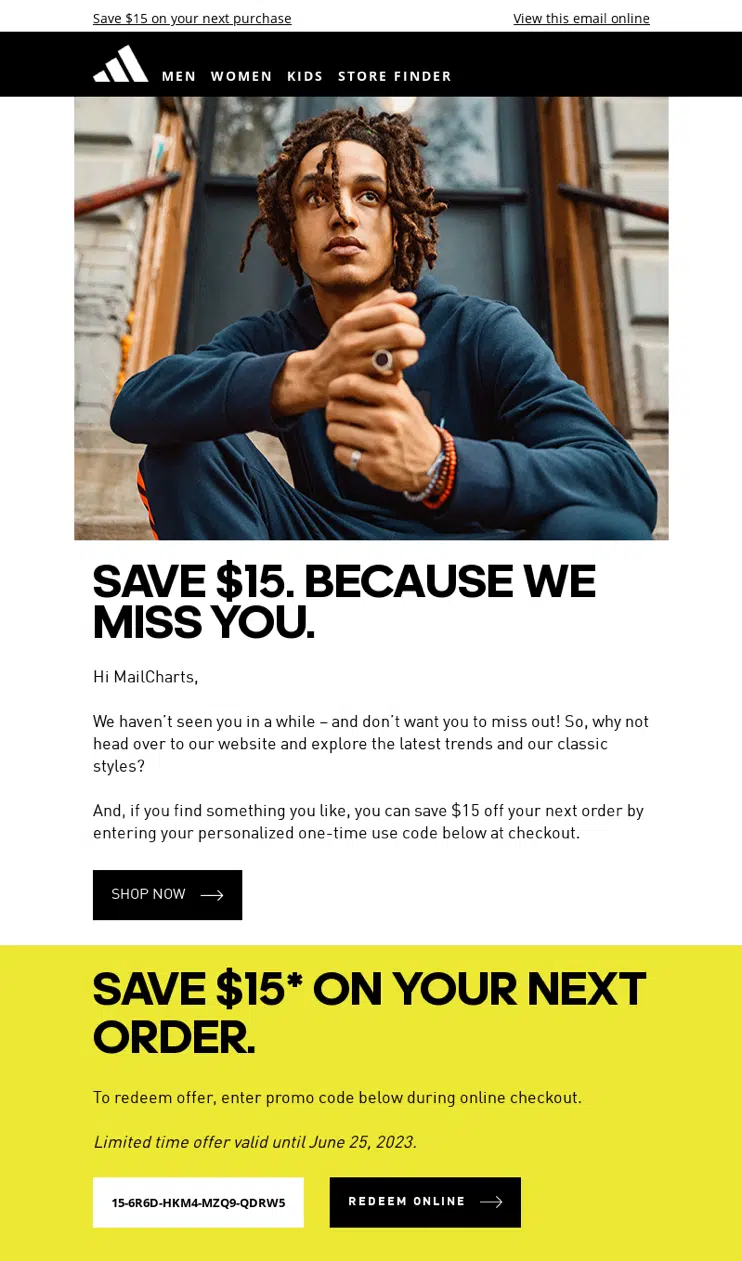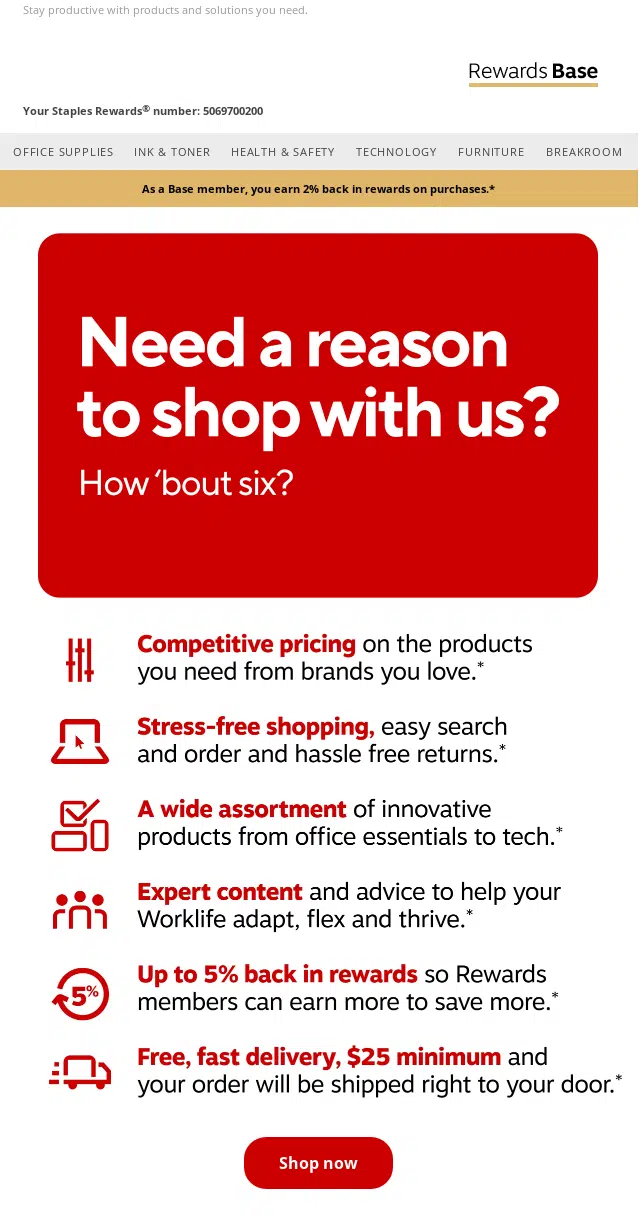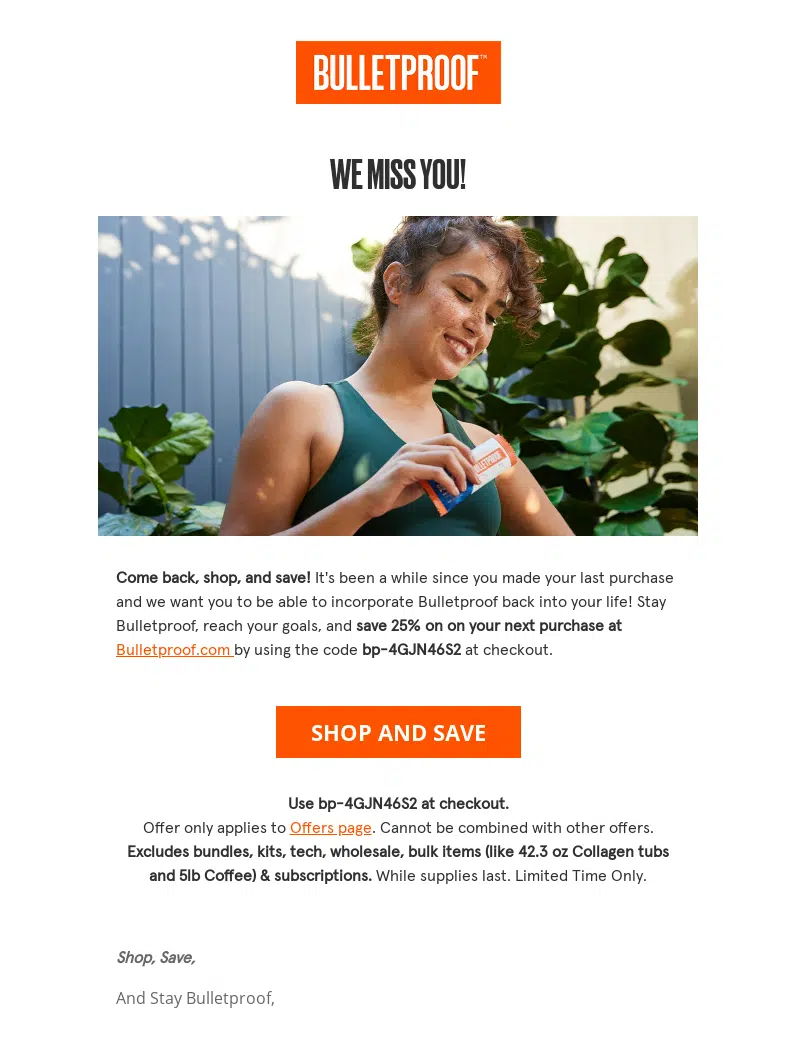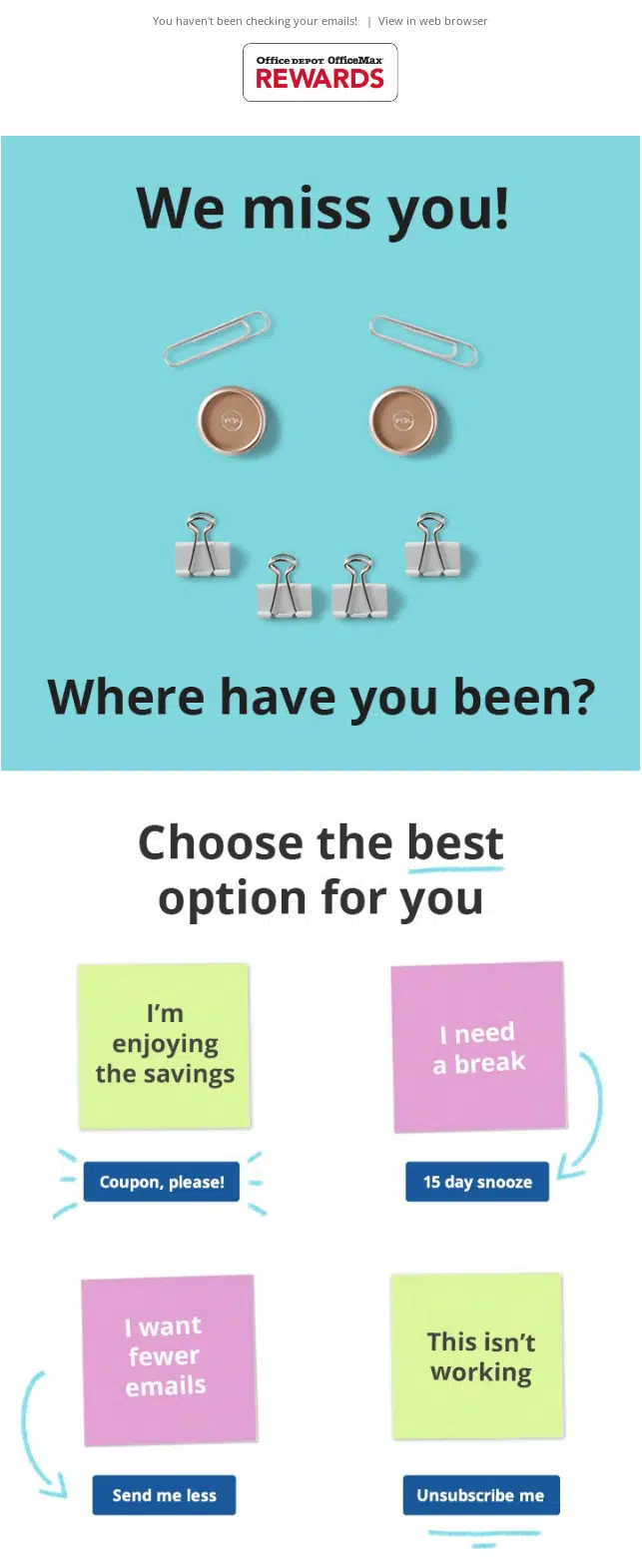9 steps to make an email reactivation program that really works
Learn how to revive dormant email subscribers and boost your ROI with these expert tips and examples of winning email campaigns.
It is a “truth universally acknowledged,” to quote Jane Austen, that it’s cheaper to retain old customers than acquire new ones. So why don’t marketers do a better job of winning back customers who once spent money but have gone silent?
Email marketers always tell me they’ve tried reactivation or re-engagement programs, which just didn’t work. They didn’t get those customers back, or the ROI on their programs didn’t measure up to expectations.
The problem isn’t so much that reactivation programs don’t work. Rather, it likely was the reactivation program was poorly designed. Maybe it didn’t use the right data. Or, the brand sent only one email instead of a series. It treated all departed customers the same instead of recognizing important differences among them and crafting programs to speak to those differences.
A reactivation program can be the trickiest of all your customer programs to organize and conduct. But it’s essential to get it right so you can spend less of your budget on acquisition and get a better return on what you’ve already spent.
Re-engagement and reactivation are not the same
What you want the program to achieve will determine whether you merely want to wake up subscribers who haven’t acted on your emails in some time or to bring back customers who had purchased at least once but not again in periods tied to your purchasing cycles.
The success metrics are different, too. With re-engagement, you want to see people doing something with your email — opening it, clicking on it, and unsubscribing from it. For a reactivation program, your goal is to get previous customers to come back and buy again. Seeing long-dormant customers acting on your emails is nice, but that’s a collateral gain, not the objective of your reactivation program.
Lapsing, lapsed and dormant customers and why they matter
Your reactivation program will focus on different audiences within your customer database. It’s essential to understand your regular buying cycle — how often people buy, whether they repurchase at similar intervals but only at certain times of the year and other variables. Don’t ignore these differences, and take the time to learn them.
When I’m building a reactivation program for a client, I look at three categories of customers:
- Lapsing: These customers are at the outer edge of your buying cycle. If your normal buying cycle is 60 days, these could be customers whose last purchase was a few days on either side of that cycle. If you’re just beginning to use reactivation programs, begin with these customers because they’re the most recently active and likely the most interested.
- Lapsed: These customers have gone just beyond your purchase cycle. They might be 90 days or more past the last purchase but have more recent purchases than the next group in this list.
- Dormant: These customers have gone at least two purchasing cycles without buying. On a 60-day purchase cycle, they might be 121 days overdue. This group requires special handling to attract attention and avoid deliverability issues. Customers who have fallen away this long might be more tempted to click the spam button or to ignore your emails — two actions that can hurt your sender reputation with the ISPs and keep you out of the inbox.
You can see why purchase data matters here and why there is no rule of thumb for when to start a reactivation program or how long it should run. As a marketer, you must call on the data and your knowledge of your customers and their products.
Consider shopper personalities
Knowing what motivates your customers to buy is another key element of a good reactivation program. Consider the four basic shopping personalities as defined by Bryan Eisenberg:
- Competitive. Fast-paced decision-making, logically oriented.
- Spontaneous. Fast-paced decision-making, emotionally oriented.
- Humanistic. Slow-paced decision-making, emotionally oriented.
- Methodical. Slow-paced decision-making, logically oriented.
It helps to know whether your customers, especially your high-value shoppers, are more likely to fall into one category or another because you can use that knowledge all through your email programs.
Are they more likely to be impulse buyers (the spontaneous ones)? Do they need to read all the fine print before taking the next step (methodical shoppers)?
You don’t have to settle on one personality, though. For example, I’m a spontaneous shopper for consumer goods. But when I’m in B2B mode, shopping for something for my company, I switch into competitive mode. The solution: Add something that would satisfy each personality in each email you send in your reactivation sequence.
Generative AI can help you create these different messaging modes in this area. In experiments with ChatGPT, I discovered that the tool could write a compelling message using language designed to motivate each personality in the list above.
Use recency-frequency-monetary (RFM) value
Get ready to dive into your data. RFM is useful for B2B marketers with different parameters, customer groups and purchasing or activity cycles from B2C marketers. You’ll consider how recently customers bought, how frequently and how much money they spent with you to structure your programs.
9 questions a reactivation program should answer
Now that you’ve gathered your data and considered your customer groups, it’s time to start developing a plan.
A reactivation program has more moving parts than a re-engagement program and takes more planning and preparation. Here are questions you’ll need to answer as you build your program structure:
1. What’s your goal?
The point of your reactivation program is not to keep sending people emails. A reactivation program aims to convert past purchasers back into active customers. (How you keep them in the corral is fodder for another part of your program.)
You could focus on customer status, such as reactivating 10% of your lapsing or lapsed customers in a year, or aim to raise 20% of your email revenue from reactivated customers. Be sure every aspect of your program focuses on your goal.
2. Who should get the reactivation emails?
To answer this question, use the data you gather to define your lapsing, lapsed and dormant customers (see above). Bring in other data, too, such as average order values, kinds of products purchased and more.
Maybe not all of your customers will need a reactivation program if you want to focus on customers with higher lifetime values, such as those who buy more often or buy at full price instead of waiting for sales.
The answer depends on what you sell and how often your customers buy. Tennis balls are cheaper and get repurchased more often than tennis racquets. If you sell both, you may need different reactivation programs for these two product categories.
When you think about it in theory, this might sound like a lot of work. But remember that these are like personalized programs. They perform better than broadcast emails because they are tailored to the specific characteristics of a customer group.
3. How many emails should you send?
A re-engagement program could be a one-off email you send manually or trigger when a subscriber is inactive on email after a certain time. For a reactivation program, you’ll have more success with a series.
Testing can help you find the right number of emails in the sequence and the intervals at which you send them. Automation is essential here because the trigger (i.e., X days past last purchase) and the message content will vary from one customer group to the next.
I recently worked with a client updating retention-focused emails, like cart abandonment and reactivation. I recommended beginning with a series of three emails sent a week apart targeting the lapsing segment and then reviewing how they performed before expanding the program to address the lapsed and dormant segments.
4. Should you suppress promotional emails while the reactivation sequence runs?
This is something to consider so customers don’t get mixed signals — receiving a promotion email from you one day and Email 1 of a five-email reactivation series the next — or an unexpected and potentially unwanted increase in volume or frequency.
Use your data, your email strategy and frequency and your customer knowledge to determine whether you should switch out the regular promotional emails for a dedicated reactivation program.
Don’t launch a reactivation program simultaneously for every customer in a lapsing, lapsed or dormant segment. Instead, begin with your lapsing customers because they’re your most recent purchasers and presumably your most interested. Then move on to your lapsed and dormant segments.
5. How should your reactivation emails look and sound?
Keep one rule in mind. Speak to your customers as people and acknowledge why they might have stopped purchasing. Include familiar branding elements like your logo, brand colors, taglines and voice and use familiar formatting.
But use subject lines, preheaders and message copy that make your reactivation stand out from your business-as-usual emails and speak to why customers fell away and what benefits they’ll get by returning.
The overall tone should reflect your brand voice and focus on your customers’ needs and wants. That’s where many reactivation emails go off the rails.
During a webinar on reactivation emails my company recently hosted, panelist Kim Greenop-Gadsby of Proact IT AB said:
“When a relationship falls apart, either the other person is the problem, or the problem is me. Let’s say I’m in a relationship and someone is constantly talking at me and telling me how great they are and how great their company is and how it’ll solve all my problems. I’m saying, ‘You don’t know my problems. You haven’t asked me anything.’ But sometimes I’m the problem. I’ve moved or changed jobs, but the brand is still hammering on that dead horse. Just accept that a person is not engaging. Move them to a different segment and move on with your life.”
6. What about overt or covert messaging?
With overt messaging, your copy acknowledges that you’re contacting customers because they haven’t bought recently. (See the Bulletproof Coffee email in the next section for an example.)
With covert messaging, such as the Staples example below, you might highlight new products, a streamlined order system, a VIP-only offer or some other subtle approach.
7. Should I add an incentive?
Maybe. Whatever you decide should be based on what you know about your customers, what motivates them, their lifetime value and whether you can expect to coup the cost of that incentive in a new purchase.
If you include an incentive, save it for a later email in your series. Suppose you send a five-email series with a budget-busting incentive. If you put that incentive to Email 1, you can guarantee many more people will redeem it than if you add it to Email 5 and suppress anyone who converted from any of the previous four emails. Your goal is still to earn as much profit as possible, so don’t lead with your best offer.
8. What should I test?
Everything! Here’s a quick list you can use to run A/B split tests on each program email:
- Number of emails in the series
- Subject line/preheader
- Tone
- Incentive or offer — to use or not and what it should be
- Content approach
- Emotion (fear of missing out, brand/product benefits, exclusivity, etc.)
- Overt versus covert messaging
Testing is essential when you’re building a reactivation program from the ground up. Perform regular A/B split tests on your program for lapsing customers. When you declare a winner, implement it as an automation.
Suppose you have previously reactivated customers falling into your lapsing segment. In that case, you can either suppress them from this program or let them receive it anyway because it will have been a while since they received your first lapsing-program emails.
9. How will I know my program is succeeding?
Choose success metrics that line up with your goals. If you aim to increase revenue from lapsed customers, use revenue-based metrics such as total revenue. Other revenue metrics, such as average order value or revenue per email, can be barometers for your emails’ success at nudging customers back to buy.
Two things to remember:
Extend your reporting period to avoid undercounting conversions. This is a good practice to follow with any email program you send. I often see marketers stop counting clicks, conversions and revenue after a week or so.
However, people often click on or convert from emails long after you send them. A longer reporting period means you’ll get a broader view of your email’s performance. For example, keep your reporting open for 30 to 60 days to discover when clicks and conversions finally peter out.
Don’t expect conversion rates that compare to your best-performing email programs. You might get only a 1% to 2% conversion on a reactivation email, while your business-as-usual emails routinely get 25% to 30%. Lapsed customers can be a tough crowd. They’re people who bought from you at least once but not lately, so you might have a higher barrier to cross.
Be inspired by these reactivation email examples
Adidas
Subject line: Take a peek – come back and make the most of this offer 👀
We picked this email because it had a grabber subject line. It uses curiosity to pique interest in the offer and stands out from Adidas’ usual subject line format.
The email is closer to a re-engagement email because it’s a stand-alone program and doesn’t refer to the customer’s previous purchases, if any. It’s also an example of overt reactivation messaging in that it refers to inactivity.
Note that when overt messaging like this is used, it needs to be based on purchase data, as they may be inactive on email yet are still buying online or in-shop.

Staples
Subject line: Your place for office supplies & so much more.
Here’s another email that could fit into both re-engagement and reactivation programs. Staples goes all in on promoting its services and benefits instead of extending an offer to come back.

Bulletproof
Subject line: Come Back And Save (a special offer just for you!)
Bulletproof sent one of the few true reactivation emails we found in our research. The copy refers directly to a previous purchase and the email arrived exactly seven months after the purchase.
We also like the subject line. While this stand-alone email mentions that an offer is involved, the subject line soft-pedals the specifics, merely mentioning an opportunity to save money.

JustFab
Subject line: ❤️❤️We’ve Missed You! Come Back for 50% OFF ❤️❤️
If you want to see robust reactivation programs in action, look no further than subscription brands like JustFab. Customer churn can be high, so many brands have placed data signals everywhere to detect when customer interest is waning, or they’re about to hit the “Cancel” button. JustFab leans on nostalgia and FOMO to remind lapsed subscribers about what they’re missing.
One interesting point: JustFab must have been doing some email testing the day the brand sent this email because another account at Mailcharts, which supplied the email images in this post, received an offer to get a gift card in exchange for signing up for an affiliate survey program.

Office Depot
Subject line: We Miss You
Preheader: You haven’t been checking your emails!
Many other emails in this collection feature overt messaging — content that directly addresses the vanishing customer. This email from Office Depot, which arrived 60 days from the last purchase date, is an example of covert messaging. (Except for that header, which could be borderline creepy or judgy for some people.)
It doesn’t refer to past purchases, but it did arrive 60 days to the day after the last purchase. We chose it because it’s an all-purpose example of retention marketing. There’s something for everyone, whether it’s a happy customer who gets rewarded for a positive comment with a coupon or subscription preference options in a layout that makes interacting easy on a cellphone-size screen.

Final thoughts
Reactivation email programs take as much planning as the most complex automated email sequences. But the results can lift your email program using nothing but a marketing automation platform, maybe a CRM or spreadsheet and plenty of up-to-date customer data.
That’s not too much to ask for, is it? But the payoff for all your trouble could be huge. If you need more ways to retain customers or increase revenue, a reactivation program designed to reach lapsing, lapsed or dormant customers, look for quick wins you can use to plug revenue gaps and stay connected to your higher-value customers.
Reactivating dormant subscribers can be challenging, but it’s essential for maximizing the value of your email list. By implementing a well-designed reactivation program, you can win back inactive customers and boost your ROI. This article outlines nine effective steps to create a reactivation strategy that really works. Ready to breathe new life into your email list? Contact Holistic Email Marketing today for expert guidance on designing and implementing a successful reactivation program that drives results.

